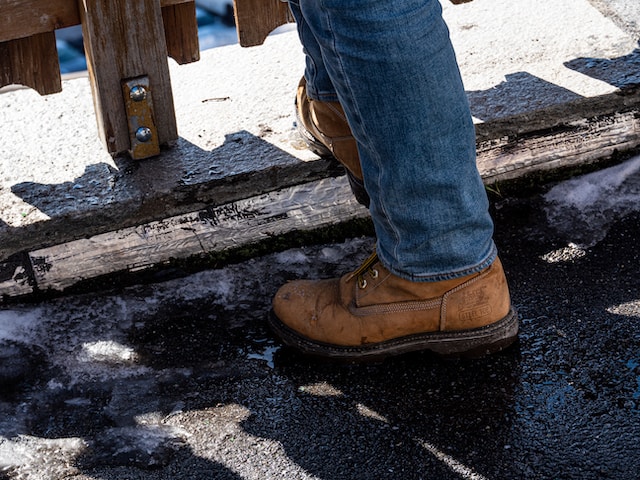When it comes to safety footwear, there are several things that you need to know before you make your purchase. Different kinds of footwear may be required depending on the type of job you are working in. The proper footwear can prevent accidents and injuries while making your work easier. The first thing you need to consider is the type of job you are doing. Specific jobs, such as firefighting or electrical hazard prevention, require boots specifically designed for the task. You should also take into account the environment you are working in. You must look for insulated boots if you work in a cold climate. Insulated shoes help keep your feet warm and comfortable while reducing foot fatigue and discomfort from standing for long periods. You must ensure your shoes meet specific standards in an industry involving heavy machineries, such as construction or manufacturing. ASTM International sets these standards and will ensure you have the protection you need.
Water Resistant
Water-resistant work boots Canada are made with materials designed to resist the effects of rain or other liquids. This feature protects you from getting wet and prevents contact between your feet and leaking or spilling liquids. These boots are often lightweight and comfortable to wear. They are usually made of leather and rubber. The latter is a material that is highly abrasion-resistant and can last long, even when exposed to harsh conditions. They also provide a good grip on slippery surfaces and resist chemicals, cold weather, and hot surfaces.
Hot Contact Resistant
Heat-resistant boots are designed to withstand the heat of 300degC for 60 seconds to protect workers who work with hot surfaces, such as asphalt. They are also excellent for road pavers, welders, and pipe-fitters. Those who work in the biomedical field, laboratories, or specific factory environments often need chemical-resistant boots. This footwear is designed to resist oil, chemicals, abrasion, and heat degradation. In addition to protecting against caustic chemicals, these boots offer slip-resistant soles and are made with abrasion resistance in mind. They are also lightweight and breathable, so they stand up to oils, fats, alcohols, hydrocarbons, and other chemicals commonly found in many work environments. The padded tongue and collar of these work boots help to absorb any shocks that come along while you are working, while the flexible rubber soles are great at absorbing any sudden impacts.
Fuel Resistant
The best safety boots are designed to be a workhorse that can last a lifetime. Take care of them to keep them looking their best for years. The best way to do this is with regular inspections, good leather treatment, and a protective coating for metal components. You can find the most innovative ad hoc boot in every color of the rainbow, but if you’re in the market for a top-of-the-line footwear splurge, your best bet is to go for something a little more high-tech. In particular, you should look for a pair made from the highest quality leather, water and oil resistant, and with an ASTM-certified foot-safety rating. The best bet for this type of footwear is to shop around for a few different brands. You can also ask your employer about their shoe standards to be on the safe side. The more research you do, the better off you’ll be.
Electrical Hazard Resistant
When you work in the electrical industry, there are extra special precautions that you must take. That includes wearing the proper comfortable and safe boots to work in. Electricians often have to deal with heavy loads, so they must wear boots that are strong and sturdy enough to hold up to that weight. They also need to be able to protect their feet from the elements, so they want to find waterproof boots. Boots that are EH-rated offer secondary protection against contact with live circuits and wires because they are non-conductive and stop current from flowing through them. These safety shoes must withstand 14,000 volts of current in one minute without flow or leakage under dry conditions.

